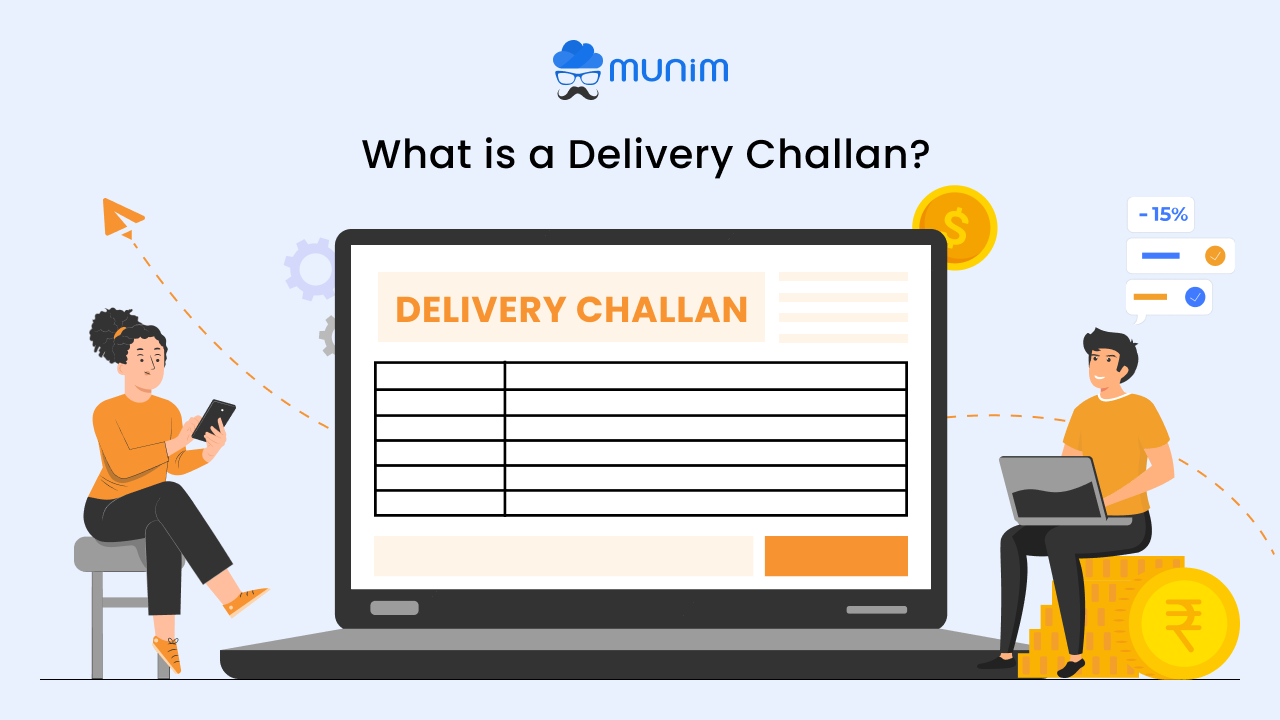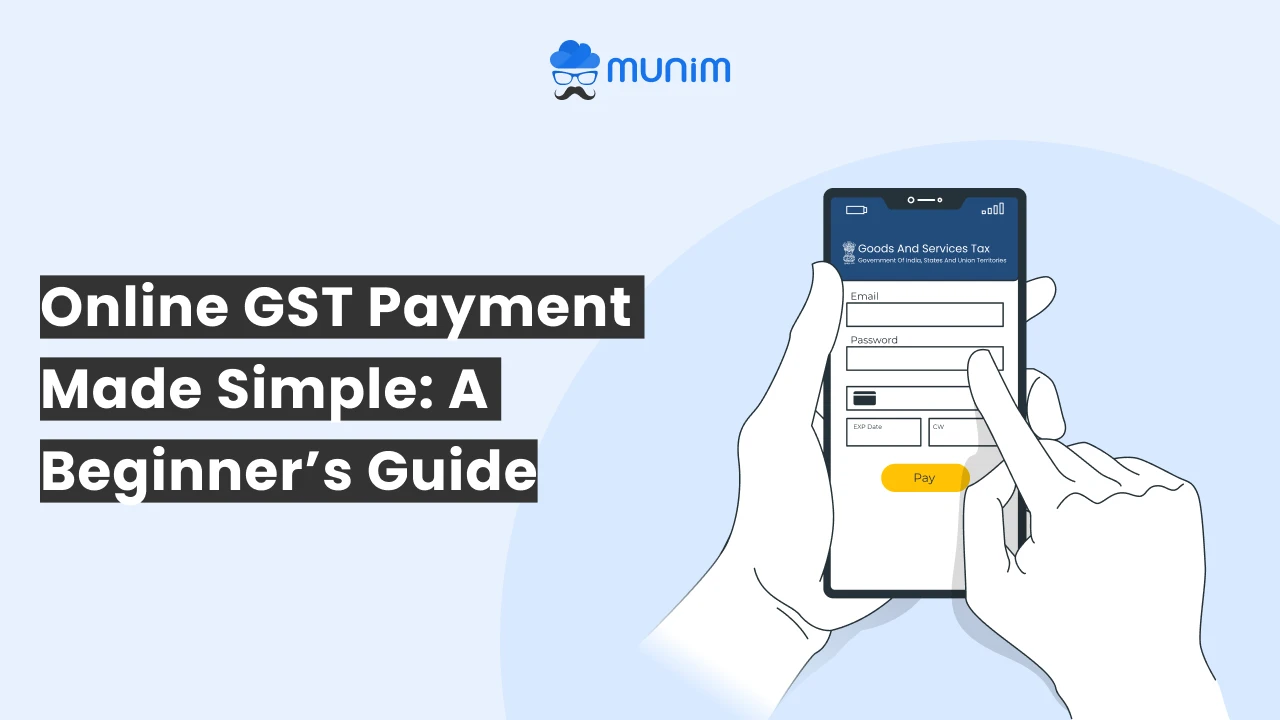What is a Delivery Challan? Exploring Its Significance, Applications, and Format

Have you ever thought about the significance of the paper the driver asks you to sign when your purchased goods are received? What is it called? Why do businesses in India practice sending the same along with the consignment? Is it redundant? Definitely no! In this blog, we will learn what a delivery challan is, format, significance, and its use cases.
What Exactly is the Delivery Challan?
To simplify, it is a document that records the description, quantity, and other important details of the goods to be transported. It is also referred to as dispatch challan or a delivery slip.
The main role of the delivery challan is to allow the customer to recognize their consignment. The document contains information such as the number of goods, GST slab rate, transport data, and delivery location.
Besides, it can be issued under GST in cases where no actual sale of goods or services has happened. For example, a delivery challan is required if you are moving goods from one warehouse to another.
So, now that you understand what a delivery challan is, let’s dive deeper into it and learn more about it.
Significance of a Delivery Challan in Supply Chain
The below-mentioned points highlight the significance of delivery challan in the supply of goods:
- Evidence of legal movement: A delivery challan is strong evidence of the legal movement of goods under GST. This document helps agencies differentiate between legal and illegal movements.
- For further processing of semi-finished goods: If goods are to be transported to another facility for further processing, a delivery challan can be used to facilitate the movement of goods legally.
- Recording return of goods: In a scenario where goods are rejected, a delivery challan records the backward movement of goods.
- Aids in inventory management: If records of all the delivery challans are maintained well, we can study data to understand stock consumption and the current stock level.
Format of Delivery Challan
Following are the details that you should mention on the delivery challan:
- Name, GSTIN and address of the client – To know who is buying the goods.
- Name, GSTIN and address of the seller – To know who is selling the goods.
- HSN code – To ascertain the GST slab.
- A detailed description of the goods – To transport them, a detailed and precise description of the goods is required, especially specific characteristics that help in identifying them.
- Quantity of the goods-in-transit – To determine the number of goods ordered that are being transported.
- Price of the goods-in-transit – To determine the tax value of goods.
- Date of the challan – The date should be mentioned on the challan for record-keeping and easy retrieval purposes.
- Challan serial number – Every challan should be assigned a unique identification number for easy identification and tracking.
- Delivery address – Not every client’s address and delivery address are the same. Because of this, it is in practice to mention delivery addresses separately.
- Amount of tax to be paid – To know whether the correct amount of tax is being paid or not.
Use Cases of Delivery Challan
Here are some of the practical scenarios where you can issue the challan under GST:
Goods Transportation After the Order is Placed
- Business to Customer (B2C): Irrespective of the order being placed either via online medium or in-store shopping, a delivery challan is used to validate the delivery of purchased goods to the customer’s specified address.
- Business to Business (B2B): When goods are sold to other businesses for the purpose of reselling, the transaction is termed B2B. The transportation of goods between businesses will be validated from the delivery challan.
Read More: Why Do B2C Transactions Need E-invoicing?
Transfer of Goods (Within the Company)
- Branch-to-branch Transfer: When goods are transferred from one branch to another within the company, the movement of goods would require to validate.
- Warehouse management: Due to space constraints or other reasons, goods are often relocated to a retail store or other warehouse. Recording the goods’ movement requires a delivery challan.
Return or Replacement of Goods
- Goods returned: When goods are returned from a customer due to any defect, damage or inferior quality, it is used to record the return of goods.
- Replacement: In the case of replacement goods, defective goods are exchanged against a new one. A delivery challan is employed to record the bidirectional movement of goods.
or Production Purpose
- Raw material supply: Raw material supply from warehouse to manufacturing units is backed by a delivery challan, which act as a of proof the quantity and type of raw material transported.
- Finished goods transportation: The movement of finished goods from manufacturing units to distributors or retailers is supported by delivery challan for record-keeping purposes.
Summing up
So this was all you need to know about challan under GST. We hope after reading this blog you got to know all the nitty gritty details of delivery challan and its format. If you want to generate delivery challans quickly, log in to Munim – accounting and billing software.
Frequently Asked Questions
1. What is Delivery Challan?
A document which is used as a record to track the movement of goods which are being delivered either to customers or being transported to one warehouse to another of the same company. It furnishes information about the goods such as quantity, delivery location and description of the goods.
2. How to generate e-way bills for delivery challan?
You can generate e-way bills either by logging in to the IRP Portal or you can also generate the same from Munim Accounting and Billing software.
3. How to make a delivery challan?
You can make a delivery challan either using MS Word, MS Excel or online tools such as Munim Accounting and Billing software. Irrespective of the method; ensure it includes the following details:
- Name and address of the seller as well as buyer
- GSTIN of both the parties
- Date and challan number
- HSN code
- Item description
- Price and tax rates
4. Who issues delivery challan?
Ans. A delivery challan is issued by the seller when goods are transported from the seller’s premises to the delivery address specified by the customer.
5. Is delivery challan mandatory with a tax invoice?
Ans. A challan is mandatory only when the supply of goods is not accompanied by a tax invoice. If the order is confirmed and accompanied by a tax invoice during transportation, there is no need for a delivery challan.
6. What is the difference between a consignment and delivery challan?
Ans. A consignment note confirms the movement of goods from one place to another. At the same time, a delivery challan facilitates the movement of goods with or without GST liability.






